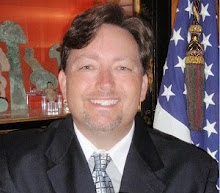Passenger train to quickly link Miami and Orlando
Today, All Aboard Florida is slated to reveal that the new express inter-city train travel service, which will cost more than $3 billion to build, will be called the Brightline.
Brightline trains will connect Miami, Fort Lauderdale, West Palm Beach and Orlando along a 235-mile route. The stretch from Miami to Orlando will last three hours, comparable to what it takes to get to the airport, go through security and fly, developers say.
The trains, designed by the Rockwell Group, are being built in Sacramento by Siemens. Construction has begun on stations in Miami, Fort Lauderdale and West Palm Beach, and on connecting urban centers that developers hope will become dining and shopping destinations. Another station will be next to Orlando International Airport.
All Aboard Florida is a wholly owned subsidiary of Florida East Coast Industries, which is involved in a range of infrastructure, transportation and real estate businesses. The project is being funded by private investors through the issuance of $1.75 billion in tax-exempt bonds and directly from the parent company. The company expects to become profitable in the first couple of years as it adds more trains and ridership increases.
All Aboard Florida and tourism officials say the trains and their stations could transform travel throughout Florida, one of the country's most populous states. Providing trains as an alternative could ease congestion on the roads and alleviate pressure on crowded airports.
"Half of our business is international," says William Talbert, president and CEO of the Greater Miami Convention and Visitors Bureau. "To connect Miami and those other three communities by train makes it convenient, affordable, clean and safe to travel. It gives the visitor options that we haven't had before."
Not everyone is on board with the new train service, however. Citizens Against Rail Expansion, a coalition of residents and community leaders in South Florida, argues that the rail system will compromise public safety. A number of hospitals along the route are on one side of the tracks while first responders are on the other, says Stephen Ryan, an attorney representing CARE.
What is now a single-track system will likely change to a double-track at various points along the way, which will pose a danger for school buses trying to cross over, Ryan says. The number of freight trains will also increase, he says. Another reason for concern that the group has brought up: It will harm the maritime industry because it will increase wait times at drawbridges that the train will cross. All that will result in a drop in property values, which will impact tax rolls, he says.
The group also questions All Aboard Florida's insistence that the project is fully privately funded. The use of tax-exempt bonds, Ryan says, is essentially a federal subsidy.
"There are profound issues for the local economy," he says.
All Aboard Florida says that no federal government entity will have exposure to the investment, and that train travel is needed to improve the quality of life.
Trains were the primary mode of transportation in the USA until after World War II, when cars and airlines took over the roads and skies. Federally funded Amtrak has remained the predominant interstate passenger train system, but it does not offer the kind of high-speed service found in Europe and Asia.
The closest thing the USA has to high-speed trains is Amtrak's Acela on the northeast corridor, which can go as fast as 150 mph. Brightline trains will not be high-speed, but its express service will be able to go up to 125 mph.
High-speed rail "takes more money and fully dedicated track and electrification," says Andy Kunz, president and CEO of the U.S. High Speed Rail Association.
There's been a recent resurgence in interest in trains, particularly among younger travelers, says Jim Wallington, a train expert at America by Rail, which promotes train travel. "This younger generation is less car prone," he says. "They are not buying cars like we used to, and they are demanding that there be alternate transportation."
President Obama's 2009 stimulus bill proposed billions of dollars in funding to create a true high-speed rail system across the nation. His efforts have stalled amid political opposition.
Privately led efforts are underway to create high-speed rail systems in Texas and between Las Vegas and Los Angeles. A publicly led high-speed rail system is under construction in California. That will eventually connect Los Angeles and San Francisco in less than three hours.
Reprint Courtesy of and Copyright 2014, USATODAY.com, USA TODAY, Nancy Trejos. Original post appeared here: http://www.floridarealtors.org/NewsAndEvents/article.cfm?p=4&id=330245

